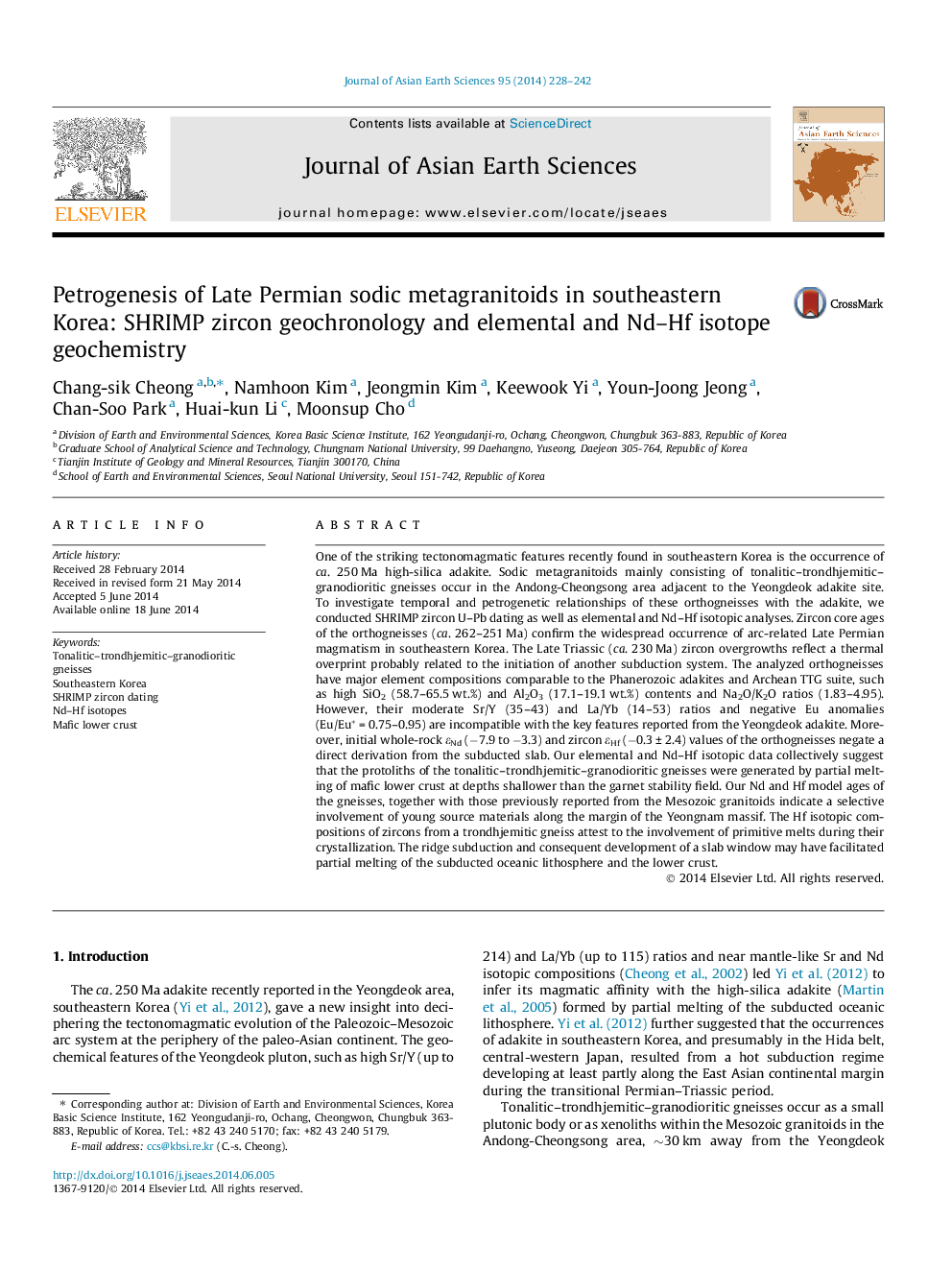| کد مقاله | کد نشریه | سال انتشار | مقاله انگلیسی | نسخه تمام متن |
|---|---|---|---|---|
| 4730632 | 1640373 | 2014 | 15 صفحه PDF | دانلود رایگان |

• Sodic orthogneisses occur in SE Korea from where 250 Ma adakite was reported.
• Zircon ages confirm widespread occurrence of arc magmatism during the Permian–Triassic.
• Geochemical data suggest shallowly seated mafic crustal sources for the gneisses.
• Ridge subduction may have facilitated coeval formation of adakite and TTG-like magmas.
One of the striking tectonomagmatic features recently found in southeastern Korea is the occurrence of ca. 250 Ma high-silica adakite. Sodic metagranitoids mainly consisting of tonalitic–trondhjemitic–granodioritic gneisses occur in the Andong-Cheongsong area adjacent to the Yeongdeok adakite site. To investigate temporal and petrogenetic relationships of these orthogneisses with the adakite, we conducted SHRIMP zircon U–Pb dating as well as elemental and Nd–Hf isotopic analyses. Zircon core ages of the orthogneisses (ca. 262–251 Ma) confirm the widespread occurrence of arc-related Late Permian magmatism in southeastern Korea. The Late Triassic (ca. 230 Ma) zircon overgrowths reflect a thermal overprint probably related to the initiation of another subduction system. The analyzed orthogneisses have major element compositions comparable to the Phanerozoic adakites and Archean TTG suite, such as high SiO2 (58.7–65.5 wt.%) and Al2O3 (17.1–19.1 wt.%) contents and Na2O/K2O ratios (1.83–4.95). However, their moderate Sr/Y (35–43) and La/Yb (14–53) ratios and negative Eu anomalies (Eu/Eu* = 0.75–0.95) are incompatible with the key features reported from the Yeongdeok adakite. Moreover, initial whole-rock εNd (−7.9 to −3.3) and zircon εHf (−0.3 ± 2.4) values of the orthogneisses negate a direct derivation from the subducted slab. Our elemental and Nd–Hf isotopic data collectively suggest that the protoliths of the tonalitic–trondhjemitic–granodioritic gneisses were generated by partial melting of mafic lower crust at depths shallower than the garnet stability field. Our Nd and Hf model ages of the gneisses, together with those previously reported from the Mesozoic granitoids indicate a selective involvement of young source materials along the margin of the Yeongnam massif. The Hf isotopic compositions of zircons from a trondhjemitic gneiss attest to the involvement of primitive melts during their crystallization. The ridge subduction and consequent development of a slab window may have facilitated partial melting of the subducted oceanic lithosphere and the lower crust.
Journal: Journal of Asian Earth Sciences - Volume 95, 1 December 2014, Pages 228–242